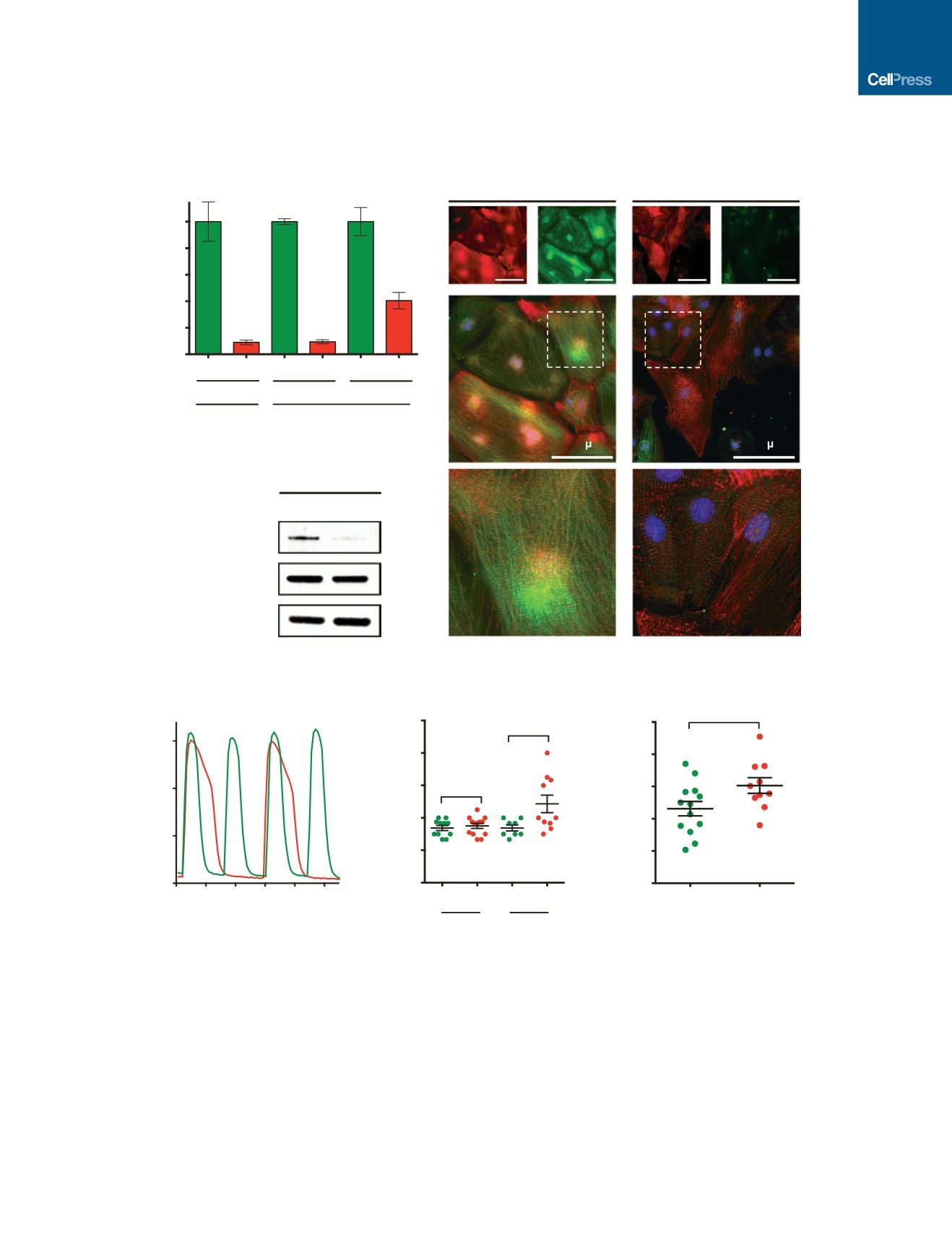

A
B
C
– Dox + Dox
0
200
400
600
800
1000
Action Potential Duration (ms)
p=0.04
0 1 2 3 4 5
0
5
10
15
Time (Seconds)
GCaMP Signal (A.U.)
– Dox
+ Dox
0
2
4
6
8
10
Downstroke / Upstroke
Duration Ratio
p=0.03
n.s.
HERG
OCT4
Dox
–
+
+ –
F
E
D
0
20
40
60
80
100
% of Maximal RNA Expression
Cardiomyocytes
Cardiac
Progenitors
MESP1
MYBPC3
HERG
– Dox
–
–
+
+
+
ACTN2
MYBPC3
ACTN2
MYBPC3
Merge
Merge
100 m
100 m
– Dox
+ Dox
MYBPC3
ACTN2
GAPDH
Dox
+
–
Figure 6. CRISPRi Knockdown in Differentiated Cell Types and Cardiac Disease Modeling
(A) Using CRISPRi,
MESP1
was knocked down by 90% in polyclonal cardiac progenitors, and
MYBPC3
and
HERG
were knocked down by 90% and 60% in
polyclonal iPS-CMs, respectively.
(B) Immunostaining of day-35 lactate-purified iPS-CMs stained with antibodies against MYBPC3 (green) and ACTN2 (red). Using CRISPRi knockdown, loss of
MYBPC3 was observed in over 85% of analyzed cells in a polyclonal population. Nuclei were counterstained with DAPI. Scale bar, 100
m
m.
(C) Western blot of day-35 lactate-purified iPS-CMs with antibodies against MYBPC3, ACTN2, and GAPDH. Using CRISPRi, MYBPC3 protein was knocked down
by 90%.
(D) GCaMP fluorescence in iPS-CMs containing gRNA against
HERG
and cultured in doxycycline (red). Recordings show a prolonged beat duration compared to
untreated controls (green).
(E) Quantified ratio of the downstroke-to-upstroke duration of doxycycline-treated iPS-CMs shows a significant difference in untreated iPS-CMs containing a
gRNA against
HERG
, but not in iPS-CMs containing gRNA against
OCT4
(negative control).
(F) Patch-clamp recordings from single iPS-CMs show prolonged action potential durations in doxycycline-treated samples containing
HERG
gRNA.
Error bars represent SD.
Cell Stem Cell
18
, 541–553, April 7, 2016
ª
2016 Elsevier Inc.
549


















